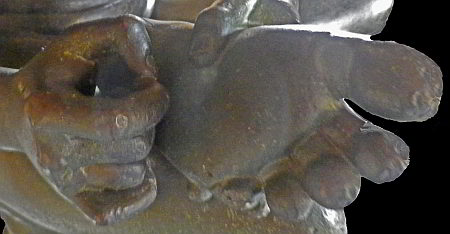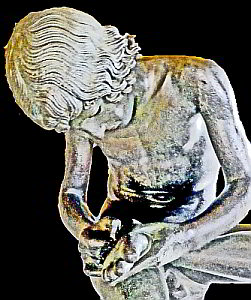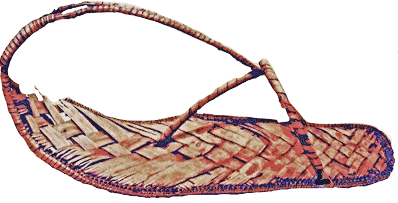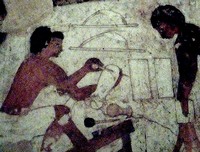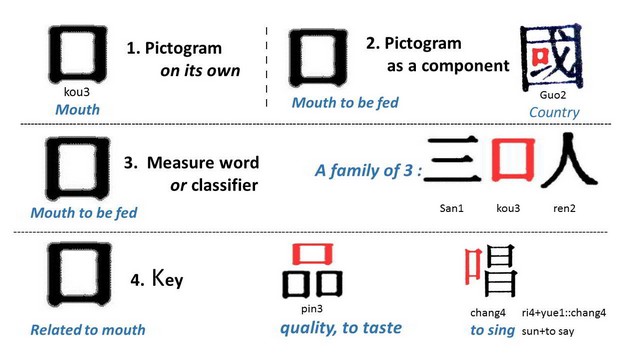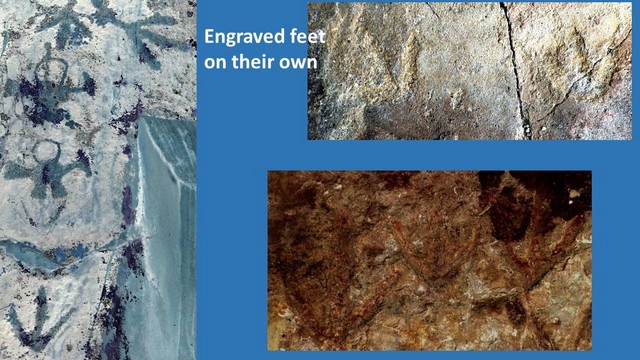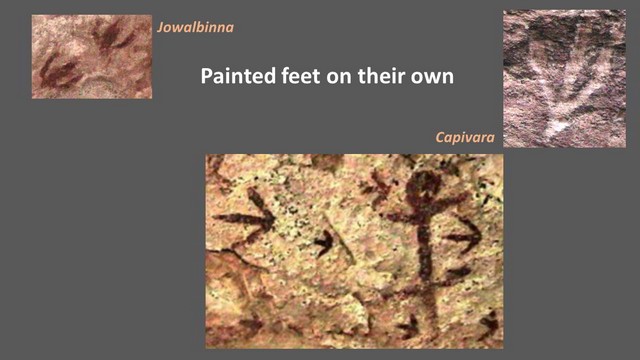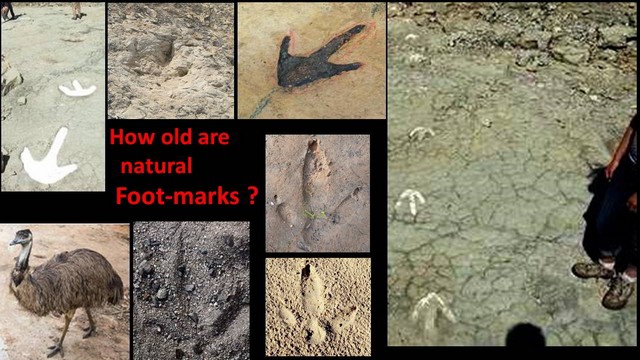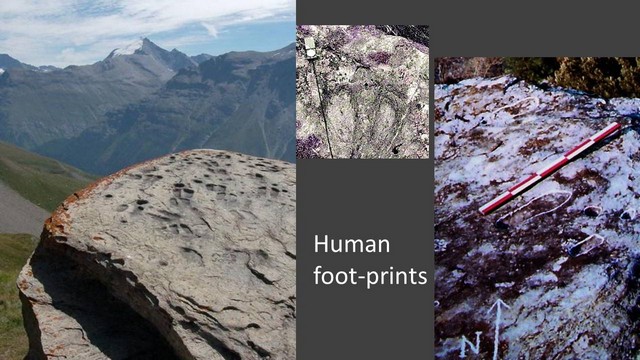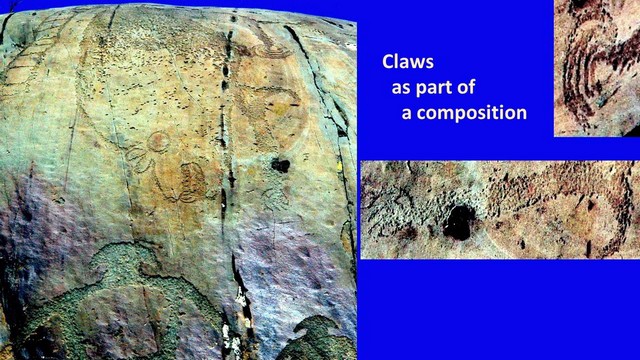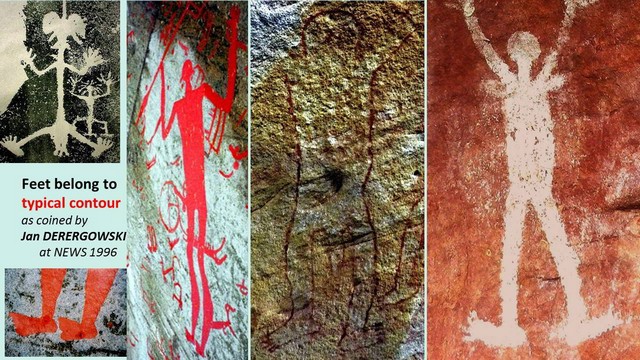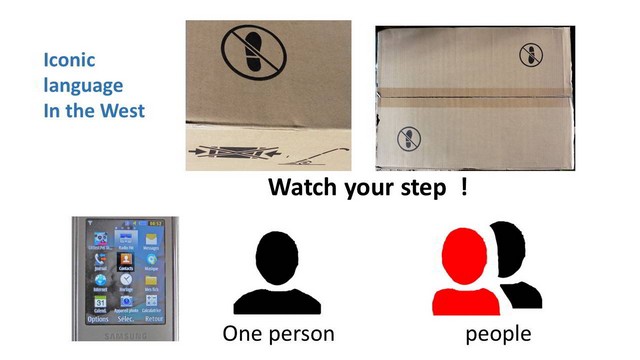 In the
Western
World Iconic language
In the
Western
World Iconic language
is used in signage.
The Cardboard box in which my
electrical oven was delivered a few weeks ago
carried
iconic warnings,
kind of Watch
your step ! !
Let’s
notice that this icon does not look like
a bare foot, but like a shoe,
whose
heel does a line mark.
Another common
iconic sign is the one representing ONE person.
If placed in front of this same sign,
the
resulting composite sign means
people.
Here, the part
representing 1 person acts
as a key, a component indicating
to which class of general ideas the composite
sign belongs.
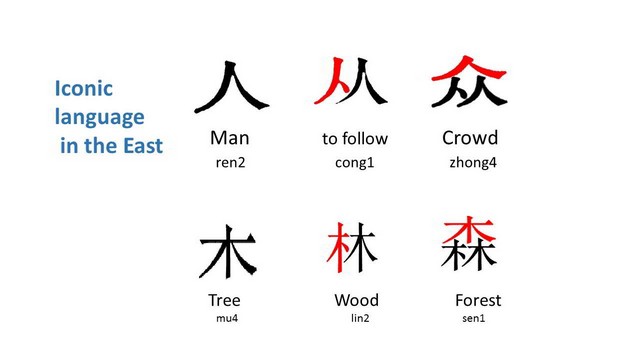
In the Eastern World, the use of
iconic
language is common.
For example, the Chinese pictogram showing two
legs means a man,
the one with 2 men means a company:
one following the
other,
and with 3 men means
a
crowd.
Likewise, the pictogram
showing
roots/ ground
level and trunk
means a tree,
the one with 2 trees means
a wood, and with 3 trees means a forest.
The same Chinese character may
carry at
times various roles:
1st
as a pictogram on its
own, e.g.:
a
small square means a
mouth.
2nd
role, as a component,
e.g.:
the ideogram for country is made out of a
large square
representing
the country’s borders with
inside halberds
and mouths-to-be-fed.
3rd role,
as
a measure word or classifier.
This time, the small square is specifying a man with a
mouth-to-be-fed.
Taken with number 3, it means
the politically correct Chinese family...
a
family
of 3.
4th role, the
pictogram small
square is the key
for things related to mouth.
This key enhances the
sense of verbs like
to taste or to sing.
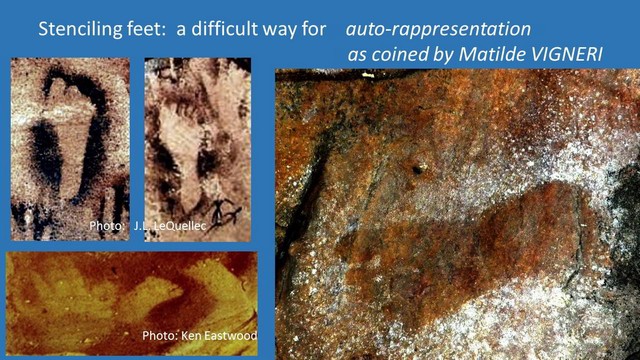
Back to Rock Art…We all
know the ease
with which Self-representation
has been achieved for at least forty thousands
years
by stenciling one’s own hand.
In contrast,
the difficulty of stenciling
one’s
own foot
explains the scarcity of foot-stencils.
Nevertheless, examples have been found
in Africa,
@ Wadi Sora
young people footprints standing next to adult’s hands,
and in Australia, @ Kakadu
Nat’l Park,
2 m above ground level, a pair of baby’s feet standing next
to an
adult’s handprint,
and @ BradyCk the unique
foot-stencil I had the chance to take a picture of.
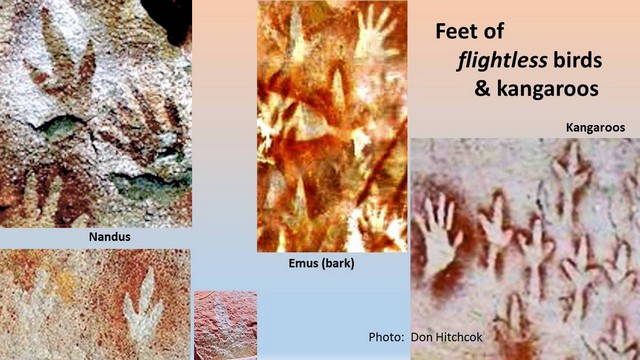
Feet of nandu, a large flightless South American
bird,
has been stenciled
@ la Cueva de las Manos next to an handprint.
In Australia, there are
emus in
the place of nandus,
but according to Don Hitchcock,
only
man-made stencils of emu’s feet have been found.
He also reported, @ Carnavon
Gorge,
stencils of
kangaroo’s paws next
to a stenciled hand.
It might be an iconic representation of
the kangaroo’s
hunter,
a kind of measure word a
la Chinese.
While foot-stencils are life-size, there is no way of knowing the real
size
of the nandus,
whose feet are represented @ Tampalaya Nat’l Park, in Argentina
or
of the emus’s @The Red Lady Gallery and @ The
Emu
dreaming Gallery in Cape York.
While foot-stencils are life-size, there is no way of knowing
the real size
of the nandus,
whose feet are represented @ Tampalaya Nat’l Park, in Argentina
or
of the emus’s @The Red Lady Gallery and @ The
Emu
dreaming Gallery in Cape York.
At
this point, it sounds appropriate to
assume that bird feet images
(stenciled,
painted or engraved)
are iconic representations of birds.
How could the image of a single
footprint
be used as an icon representing an animal?
Let’s note that Fossilized
tracks are hardly
distinguishable
from engraved ones.
This means that fossilized footmarks of
dinosaurs must have been an object
of respectful curiosity as well as a very
strong emulation.
Short-lived footprints left in mud or wet sand by all kinds
of animals are abundant in nature,
such as this emu foot-print in gravel.
To summarize,
I would say that the most
salient feature of a living
being might
well be its footprint.
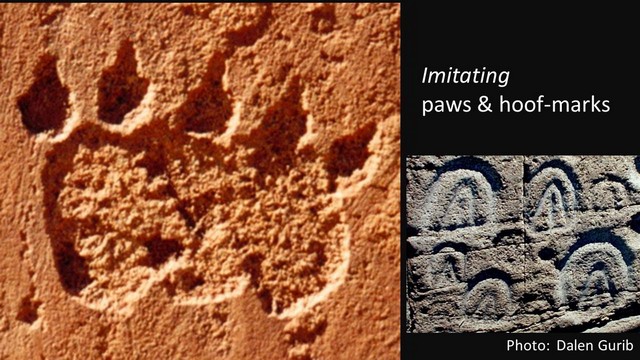
This imitation of a paw-print near Twyfelfontein in
Namibia, is symbolically like
the visiting-card left by Mr. Leopard,
just like the horse’s hoof-prints @ Qiangan Obo sumu in
Inner-Mongolia.
And what about engravings of
detached
human footprints ?….
In La Vanoise Alps, 2’270 m.o.s.l.,
let’s wonder at those deeply engraved
pairs of
footprints.
They contrast with this single pair
near Grimentz, in Wallis and
this standing alone
footprint near Aubrias, in
Gard.
We suspect that such engraved feet
indicate lookouts for
observing sunrise at solstice.
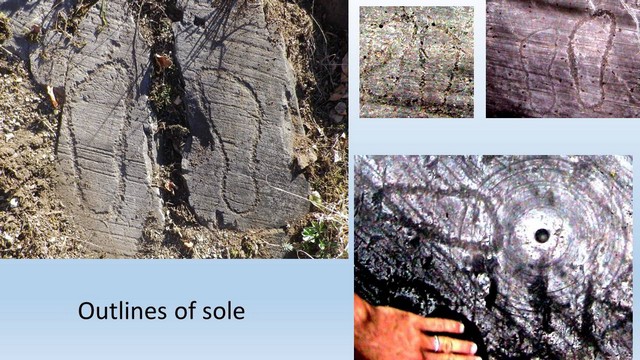 Outlines
of soles are far more frequent than deep engravings,
Outlines
of soles are far more frequent than deep engravings,
e.g. @ camunian
sites like Zurla
& Foppe di Nadro.
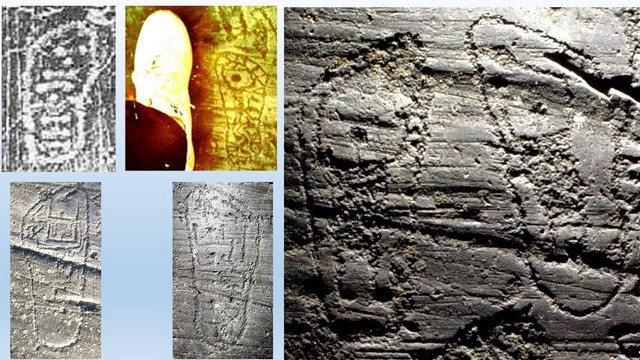
Some of those outlines are even
decorated
with anthropomorphic figures, and others,
interestingly, with
the octaedris
calendar.
Compared to the
shoe of my 11 years old son at the time, their small sizes suggest
the use of man-made patterns out of
bark.
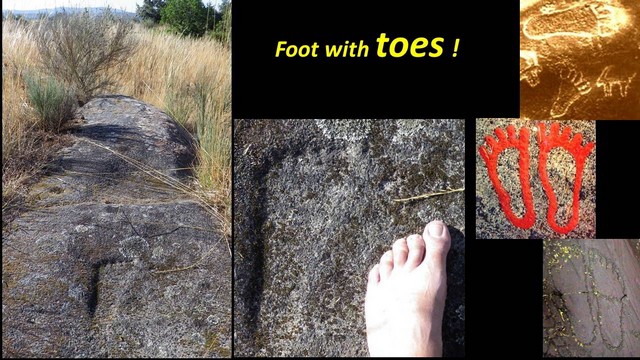 In
contrast to the numerous engravings of bird's feet, engraved human feet
with toes are
rare,
In
contrast to the numerous engravings of bird's feet, engraved human feet
with toes are
rare,
here @ Ourense, in Galicia,
@ Spee tay tiga in Afghanistan,
@ Listleby in
Sweden
and @ Foppe di Nadro in
Italy.
Their size looks realistic.
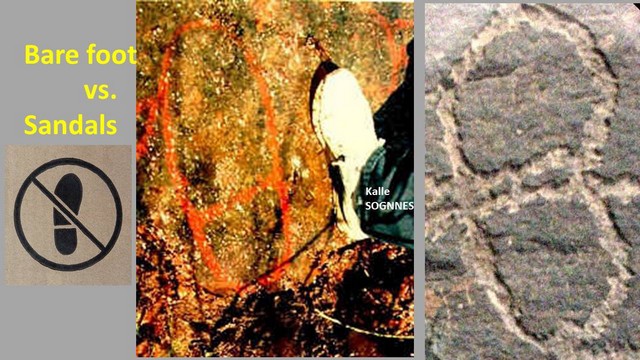 We have seen in the
introduction, that modern signage uses for this purpose the
line of the heel.
We have seen in the
introduction, that modern signage uses for this purpose the
line of the heel.
Here
@ Lerfall near
Trondheim, in this engraving of a giant clog-print,
it is the lace under
the
sole which appears as the distinctive sign for sandal.
On this shot, as a gauge for
the size of the
glyph, I
captured also the clog of our colleague Kalle Sognnes.
To the right, this glyph deserves a closer examination
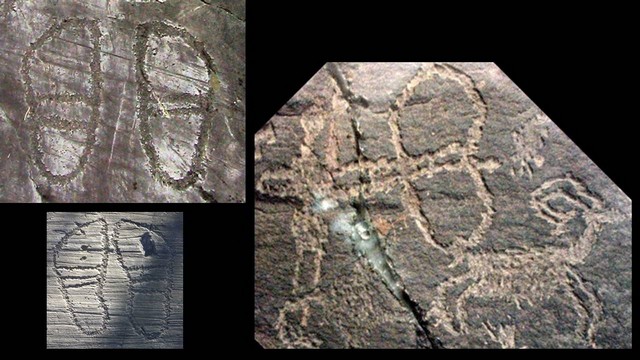 In
this Mongolian engraving, the poorly shaped figure of a bow was
misleading us.
On the contrary, @ Foppe di Nadro, in Valcamonica,
In
this Mongolian engraving, the poorly shaped figure of a bow was
misleading us.
On the contrary, @ Foppe di Nadro, in Valcamonica,
numerous engravings represent unambiguously pairs of sandals.
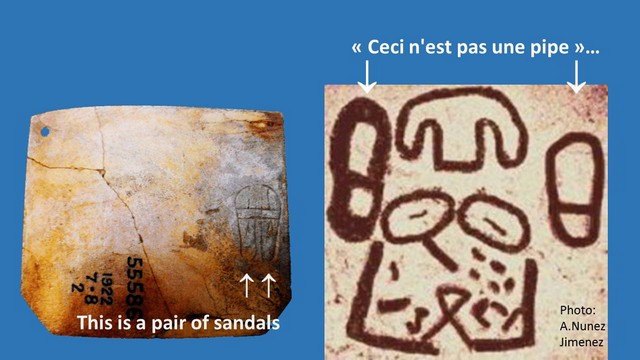
This 5’000 years old label made
of hippopotamus ivory carries a glyph and this glyph
is iconic:
it
just looks like the
sandals of Pharaoh‘s Den to which this label was
attached.
On the contrary,
in the pictography on
the right,
the
sandal-prints stand
for the ears of a shaman...
Antonio Nunez Jimenez qualified this weird piece of
Rock Art de una figura
interesantisima.
In this painted
composition @ La
Cueva de Pichardo in
Cuba,
the icons of several items stand for something else, calling
to mind not one,
but several ideas. It is
what I call iconical
graphemes .
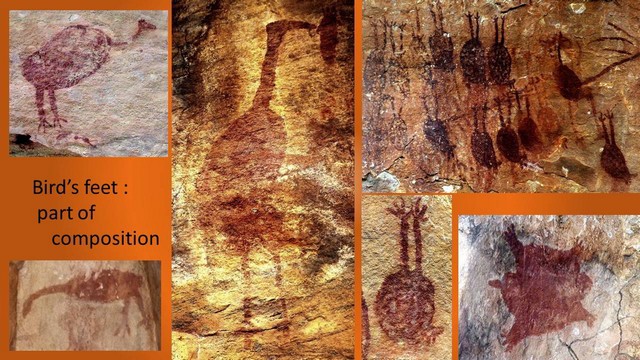 The
carefully painted feet of those animals are
The
carefully painted feet of those animals are
providing
redundancy to
their overall representation, just like keys in
Chinese characters.
@ Capivara,
there are nandus with
feet
& toes,
and,
@ Jowalbinna,
emus, black-storks, hanging flying-foxes with a reduced number of toes,
and
even of sugar-gliders with feet &
toes.
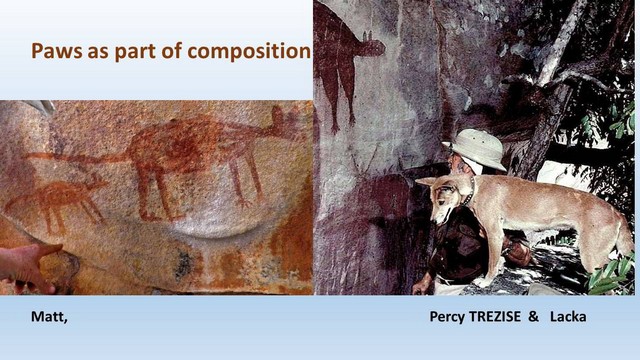
@
Sandy Ck , in
Cape York, my guide Matt Trezise is
pointing his index
toward a dingo & its pup, both with carefully painted
toes and
@ Wallaroos
Gallery near Jowalbinna, Percy Trezise, Matt's dad with his dingo Lacka,
were facing (quite
a while ago) this giant wallaroo with
carefully painted toes.
@ Gorny-Altaï,
next to the engraving of a ladder,
cropping up from the top of a huge rock,
this bear is stretching
its devastating claws toward
a group of anthropomorphs.
On the right blow-ups of the rear and
front claws.
Human feet-&-toes with
oversized heel
may also be part of larger compositions.
They illustrate what Jan Deregowski calls « Typical
contour".
@ Helanshan, the soles are
attached to the tip of the legs.
@ Listebly, two
left feet are
attached to the
sturdy calves of the
hunter.
@
Emu Dreaming Gallery, the man is
represented in front-view,
while the
big toes belong to feet in back-view,
just like the big toes of the young lady
@ Yam Camp Gallery with her breast in front-view.
In all those cases,
the icon Feet-&-toes
appears
as an essential attribute,
a kind of key specifying
bipeds.
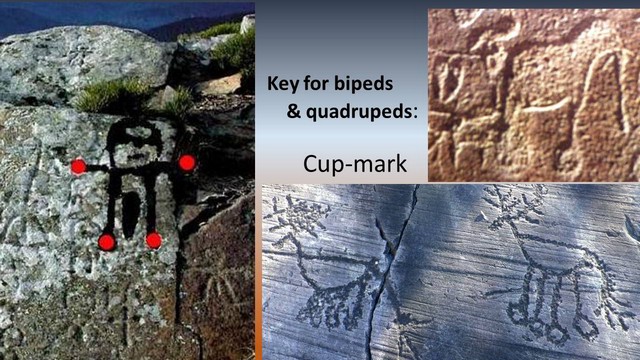
A cup-mark may call to
mind the
imprint of a foot on sand or snow.
Hanging at the tip of a limb, it acts as a
key for bipeds and quadrupeds.
@ La Gardette such cup-marks are pendant at the
limbs
of anthropomorphs (blow-up).
@ Twyfelfontein
at the legs of an Elephant,
and @
Zurla at
the legs of deers.
By
the way, the glyph representing the woods of those cervidae
from
iconic is transformed into an iconical grapheme -
a clone of their woods is
transplanted as a substitute for their tails.
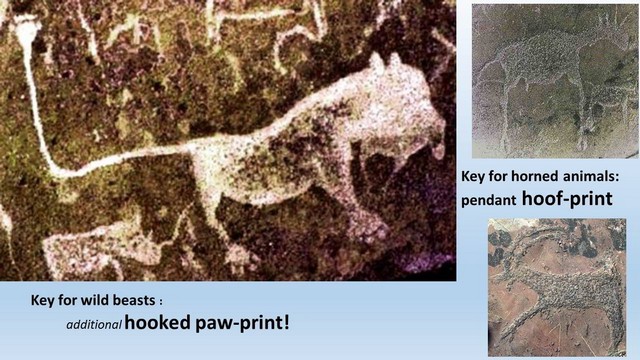 The
key for
a ferocious beast,
such as the Lion of Twyfelfontein,
The
key for
a ferocious beast,
such as the Lion of Twyfelfontein,
is his
visiting-card, the imprint of his paw.
An additional paw-print is even
transformed into an iconical
grapheme and dominates the whole glyph.
On the right, the pendant hoof-print of those horned
animals
significantly lengthen their legs
@ Twyfelfontein and Gorny Altaï.
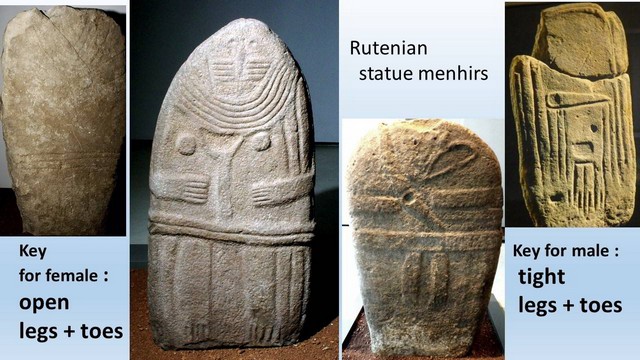
To identify the feminine gender of Rutenian
statue menhirs,
the
key is a
pair of open legs+toes,
(boosted by additional attributes such
as breast & necklace).
For male gender, the
Key is tight
legs+toes,
(boosted
by attributes such as a dagger and its cross-belt).
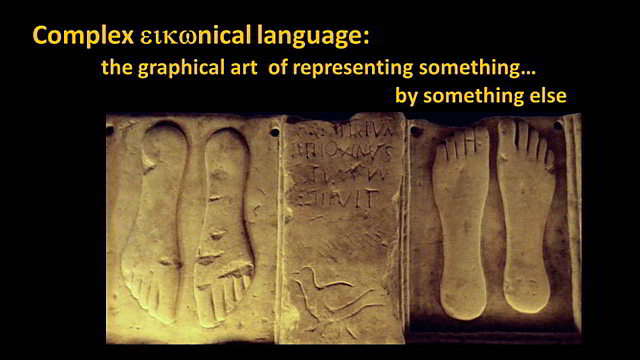
Itus et Reditus,
Ida y Vuelta, as
one would say in this country.
This 3rd century votive stele to Goddess Caelestis for
a safe round-trip
leads us to the conclusion of our pictorial atlas:
The
concept of keys & measure
words still
used
in Chinese
shed a new light on foot images in
Rock Art. And
those images
ranging
from
man-made clones of dinosaurs
foot-prints to
man-made
sandal-prints
are
showing up as instrumental to an early quest of humankind…
the quest for a
Complex eikonical
language
not
only able to represent something by something looking alike,
namely icons,
but also, at other times, by
something calling
to mind,
namely iconical
graphemes, in other words,
the crucial step toward Writing.
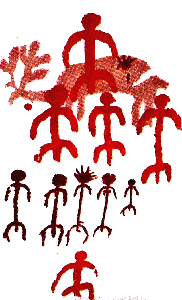 XIX
IFRAO, Caceres, 31Aug.-4 Sept.2015 /
XIX
IFRAO, Caceres, 31Aug.-4 Sept.2015 /